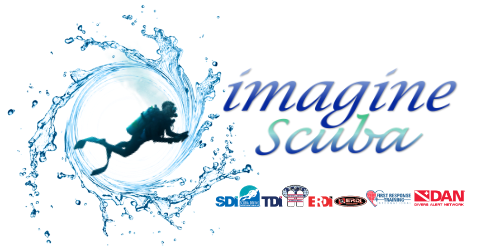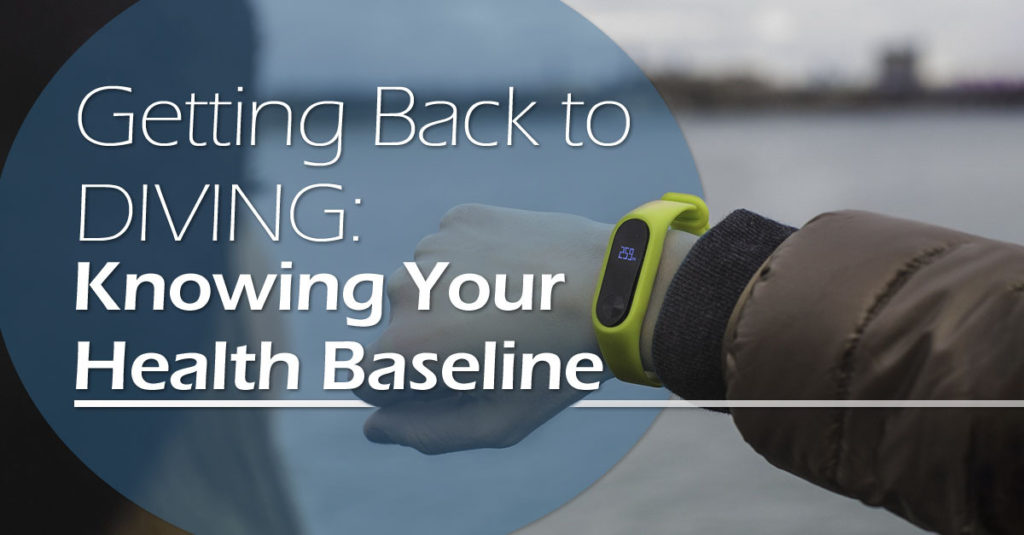As we navigate through these crazy times and try to figure out what we can and cannot do, I figured I would write down some things I have learned. For what is most likely at the forefront of many divers’ minds, these recommendations will help to address the concerns related to COVID-19. I also think they will address those other unfortunate times when we find ourselves not being able to get our gills wet. I live in the northern climate and know that it takes a lot of motivation and willpower to get out and dive when the temperatures (and water) are freezing. This means we spend time out of the water, so our bodies are not in the same condition as they were at the end of summer. That and we got a little older.
Health baseline
A good practice is to establish and record a health and fitness baseline. This baseline does not replace the regular exams from your doctor; this is your personal baseline. There are many ways to establish this and it really all depends on your lifestyle. There will also be variations depending on age. Here are some examples of things you can do:
- Take a brisk walk for at least 30 minutes, five times a week.
- Jog or run for 75 minutes every week.
- Perform strengthening activities at least twice a week, working all major muscle groups.
- Ride a bike (stationary or regular) for at least three hours a week. These sessions can be broken into long or short sessions i.e. three one-hour sessions or multiple 30-minute sessions.
- Use a combination of these activities to keep your body guessing and engage different muscle groups. This will also help keep up your mental fitness by varying activities and keeping things new and fresh.
At the end of your activities, write down a few notes:
- What is your heart rate?
- What is your oxygen saturation?
- How’s your breathing?
Wait about five minutes and check all the same things to see how they have changed. We’ll talk more about heart rates, oxygen saturation, and recovery later on. Here’s where COVID-19 and other significant illnesses need to be considered.
If you have had COVID-19 or another significant illness, what you used to be able to do may not be possible now, so take it very easy and slowly build back up to your normal level with your doctor’s assistance and guidance.
If you have not had COVID-19, the data that you have collected in your first series of activities is your baseline. These are the numbers you will go back to year after year to determine how ready you are to dive. These are also very good baseline numbers to start improving. For example, if after a month of walking 30 minutes five times a week you find it is not that challenging, increase your time, distance, or intensity. Improving your baseline scores regularly will help to improve your diving fitness.
Pulse oximeter
If you are not familiar with what this is, it’s an instrument that is normally clipped to the tip of your finger on your fingernail. The pulse oximeter, pulse ox, estimates the amount of oxygen in your blood. That’s very simplified, but enough for the purposes of this article. A normal reading on a pulse oximeter would be between 95 and 100 percent. These percentages are assuming there are no other health conditions. If there are health factors such as COPD, percentages could be as low as 88 to 92 percent. These healthy and corresponding lower oxygen saturation must be reviewed and signed off by a physician before undertaking any diving. Anything below the normal range is considered low and could be hypoxemia. Consult with your physician on what your normal number is.
If you have a pulse oximeter, take a resting measurement and make a note of the percentage. This is the percentage you will compare against after your baseline activities. After your activity, note the percentage. Five minutes later, do the same. If everything is working correctly, you should be back in the normal range quickly. If at any time during your activity you feel out of breath, check your percentage. If it is below the normal range, stop what you are doing, sit down, and relax. With moderate exercise our pulse ox reading should be 95-100% and with significant workload that may drop slightly. If blood oxygen saturation (SpO2) values reoccur between 88-92%, you should see your doctor and discontinue exercise. For any occurrence below 85%, you should seek immediate medical attention.
Thermometer
The use of a thermometer is pretty specific to the current COVID-19 concerns. Temperature is just one of several indicators. Most information suggests you should take your temperature in the morning and the evening every day. This establishes a baseline, just like with your exercise. If you see a change in your temperature (i.e. you get warmer and there’s no good reason for it), monitor yourself and call or go to a doctor. Even a slight unexplained temperature increase should be checked. The typical adult temperature range is 36C/97F – 37C/99F. Just like in your health baseline information, note your temperature.
Heart Rate Monitor (HRM)
Heart rate monitors tell you a lot of information, but please note, this brief description does not replace what your doctor can tell you or the information that comes with your heart rate monitor. With the disclaimer out of the way, we can get to the important details. Heart rate monitors today come in all shapes and sizes and are much easier to use and understand than they were in years past. They are broken down into 2 main categories: optical and electrical. We suggest researching the two options before deciding which is best for you. The most common is a watch that you wear on your wrist that gives you real-time feedback. What’s important to know is the heart is a muscle and just like all other muscles it needs exercise. While you are exercising, your heart rate goes up and then it should come down. This is called recovery. What you want to see is an elevated heart rate for a period of time, roughly 20 minutes or more. As soon as you are done with your exercise, you should be able to watch your heart rate drop or recover. As you exercise more and more regularly, the recovery will be faster. Record these values with your other baseline information to complete your baseline profile. In addition to HRMs, charting your pulse rate each morning immediately upon waking can give you amazing feedback on your daily health.
None of the information above is intended to replace the need for you to see your doctor and get an official diagnosis for COVID-19 or any other health concerns you may have. The goals are to let you know where you are and to catch a change in your health as soon as possible. With this information, should you have a change in your health, you will also have a better idea of when it is safer for you to start diving again, after you have been cleared by your physician. Keep in mind, if you have been away from diving for a while, restart slowly and don’t try to pick up where you left off. Do some easy dives, practice some skills, rebuild comfort, and get used to your gear again. Stay shallow, have your buddies nearby and remember to keep it fun!

